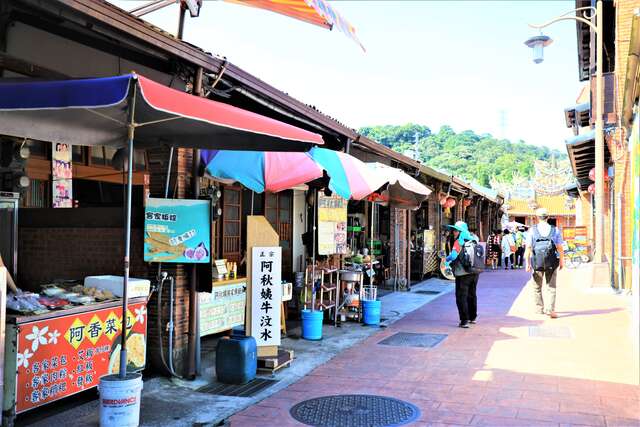Sankeng Old Street Introduction
Sankengzi, known as the first street of Longtan, is an authentic Hakka village. In the past, Sankengzi was one of the busiest docks along the river, bustling with activity. However, with the completion of the irrigation system, the water level of the Dahan River dropped sharply, and the commercial function of Sankengzi gradually declined. The old street of Sankengzi is located in Longtan District, Taoyuan City, with its main area centered around Yongfu Temple, extending outwards to Heibaiwash. The old street has a narrow exterior and a wide interior, rich in historical charm, attracting many tourists. Sankengzi Old Street retains traditional Hakka characteristics and has also served as a filming location for movies such as "The Great Rainbow Fish" and "Love Makes Us Together," making it worth a visit. The origins of Sankengzi can be traced back to the development of Longtan by Lu Xifan during the Kangxi period, with Han settlers arriving only in the ninth year of the Qianlong period (1744 AD). The area is characterized by a river terraces topography, where three rivers flow into the Dahan River, forming three valleys on the plateau, thus giving rise to the name Sankengzi. Walking into Sankeng Old Street, one can see "Heibaiwash," a place where women used to wash clothes. The narrow and winding Sankeng Old Street is difficult for cars to navigate, a characteristic of Hakka villages intentionally designed with curves to deter thieves. This brief old street maintains the traditional arcade architectural style, with specialty shops selling Hakka delicacies such as vegetable buns, grass rice cakes, beef shavings, and orange jam. At the end of the old street lies the core of the Sankeng Old Street settlement—Yongfu Temple, built in the 56th year of Qianlong's reign, currently dedicated to the three deities Yao, Yu, and Shun, and serves as a center of faith for local residents. Additionally, the Daxi Novembrist to Longtan Sankeng Waterfront Scenic Green Corridor connects Daxi Shimen Irrigation and Longtan Sankeng Old Street, allowing visitors to experience the beauty of the irrigation scenery, rural landscapes, and cultural old streets all at once.





































